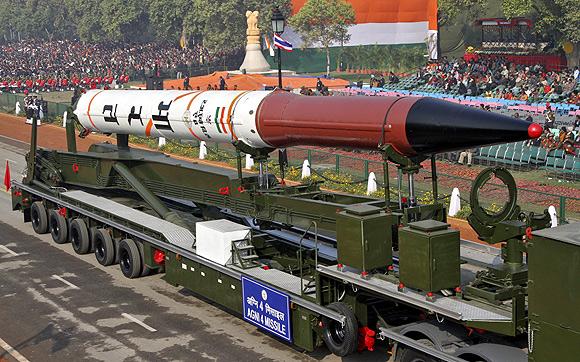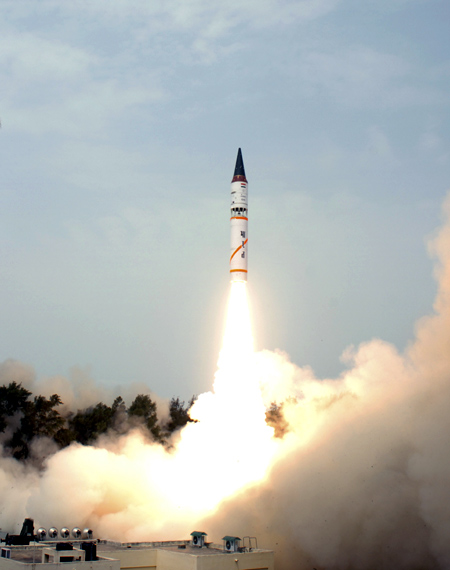Photographs: B Mathur/Reuters
India will join the elite club of nations with Inter Continental Ballistic Missiles as the Defence Research and Development Organisation is planning to carry out the launch of the over 5,000 km-range Agni-5 missile in April.
"The Agni-5 will be launched in mid-April. The date of launch has not yet been finalised but it will be done within a week. The missile will have a range of more than 5,000 km," DRDO Chief V K Saraswat told a press conference.
Click on NEXT for more...
BIGGER, better, faster Agni missile to take off soon
Image: Agni-III missile takes off in its third flight launch systemPhotographs: Reuters
He said the technology of the long-range missile is one of the most advanced and closer to the ones being used by countries such as the United States.
On the indigenous Ballistic Missile Defence shield, Saraswat said it was a two-phase programme, the first of which would be completed by 2013 and the next by 2016.
He said the premier research organisation will carry out the test of the endo-atmospheric version of the system by intercepting an incoming missile at the altitude of 150 km and the exo-atmospheric version will be tested next year by intercepting at 30 km.
Click on NEXT for more...
BIGGER, better, faster Agni missile to take off soon
Image: Soldiers roll out the Agni missile during rehearsal for the Republic Day paradePhotographs: Reuters
On the Naval LCA Tejas programme, Saraswat said points were raised by the Navy chief about the flight schedule of the aircraft.
"Within one or two months, the LCA Navy will undergo its first test as work is going on on its landing gear," he said.
Asked if India had the means to protect its assets in space, Saraswat said India was working in that direction and was also in the process of deploying special Synthetic Aperture Radars on the satellites.
He said missiles such as Agni-4 could also be used for launching micro and mini satellites in the future.
The DRDO chief said work was going on towards developing systems for preventing cyber attacks on government networks and systems.
Click on NEXT for more...




article